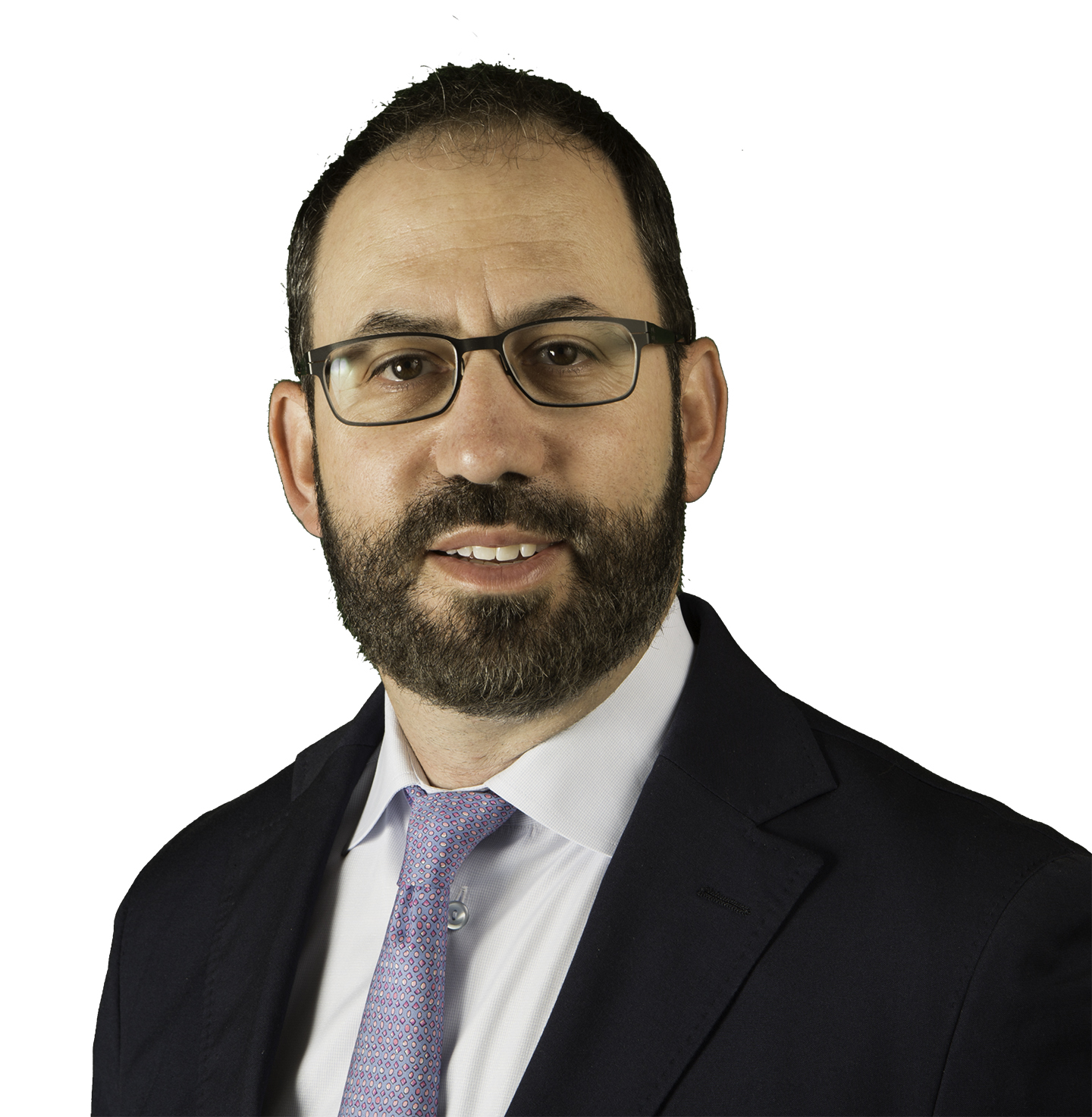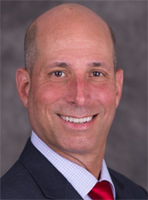Leading Your Biotech Through A Beating

By Matthew Pillar, Editor, Bioprocess Online

I sat down with Portage Biotech CEO & Director Ian Walters, M.D. on a recent day during the beating that biotech stocks have been taking on Wall Street. While he acknowledged the pain, he also offered insight into the principles—focused fundamentals, flexibility, and frugality—that have positioned Portage well for times like these.
A Solid Foundation In Suddenly Volatile Biotech Markets


Many of the startup biopharma companies in the sandbox where Portage plays will struggle in the tighter capital markets that typically follow a “correction” on Wall Street. But because Shaw and Dr. Walters heed their own advice — finance to milestones, spend conservatively, guard the runway — they’re likely to come out stronger on the other side. “Some of the funds are shorting any company that has less than a year of cash,” says Dr. Walters. “We have a much longer cash horizon than most in our class, which is particularly important in these down markets. We don't have to come back to the marketplace when we feel our stock is undervalued,” he says
Portage has also built a broad and deep pipeline. That’s important for companies that want to play a “many shots on goal” strategy, but there’s more nuance to the success of that strategy than pure volume. Chief among that nuance is the timing of those shots. “Unlike a lot of companies, our business model is set up such that we have a lot of potentially important data milestones on the near horizon, any one of which could very well be a meaningful value inflection for the company,” says Dr. Walters. “I think we’re seeing a market that is being punished a bit for some of its behaviors over recent years in which many preclinical companies were going public without any near-term catalysts to support the valuation. These companies raised a lot of money without strong fundamentals, based on the hope that they would figure out the science eventually. This works in a bull market, but when times get tough, investors are going to get out if there hasn’t been any meaningful value inflection milestones, and companies have been burning through their cash. This has led to a snowball effect when funds have had significant losses and need to pull out broadly. Suddenly the sector looks less attractive, and unfortunately, that drags down some of the companies that have good fundamentals”
Focused fundamentals don’t guarantee success, but they are prerequisite. Dr. Walters’ commentary reminded me of my high school track coach, who would regularly berate me for my propensity to take up distractions. “Matty!” he’d shout in a gruff, guttural voice. Coach Capuani was one of the few people I was comfortable with calling me Matty, because he was usually yelling it in a disarming tone that struck fear in my chest. “Matty! If you spent half as much time on the track as you do talking to girls, you’d be an all-American by now!”
Even on the track, during races, I was distraction prone. That’s a problem, because like running a biopharmaceutical company, hurdling is a precision event. The effects of even the most minute errant movements are consequential to the outcome, to the finish, to the time. I had this terrible habit of assessing my competition during a race, darting my eyes into the lanes running parallel to mine to see who was coming or going. My head followed my eyes. That slight movement would cause a chain reaction that effected balance, timing, and vision and disrupted my mechanics.
After one race, Coach Cap, as we called him, threatened to fashion me a set of blinders like those worn by racehorses to rid me of the habit.
Maintaining that kind of focus can be challenging for a newly public biopharma, especially when the XBI is down some 50% and the S&P Biotechnology Select Industry Index isn’t far behind. But Dr. Walters and his company are doing novel, precision, and highly regulated work. Clearing the fundamental scientific, manufacturing, regulatory, and business hurdles faced by any emerging biopharma company requires focus on the path that lies ahead, not peripheral distractions like the ebbs and flows of the markets. Dr. Walters tells me the flexibility and frugality Portage had been practicing in advance of the recent market damper have positioned it well to weather the squall.
Flexibility In Fickle Markets
The pipeline at Portage looks notably aggressive for a company its size. Its portfolio includes iNKT agonists, antibodies, small molecules, protein therapeutics delivered by novel intratumoral formulations, nanolipogels, and virus-like particles. That would be a lot for a traditionally structured biopharma company to develop, much less manage even a few of those candidates into the clinic. But Portage Biotech is not a traditionally built biopharma company.
In shaping his company’s organizational structure, Dr. Walters leaned heavily into his experience. “We’re striving to put one to two new products into human testing per year,” he says. That’s a similar goal the oncology group at Bristol Myers Squibb had when Dr. Walters was executive director there. BMS had 24,000 employees. Portage Biotech has about 10. But, in Dr. Walters’ purview, they’re ten of the best in the business.
“One of the things that makes us unique is the fact that our team has been in the industry for so long, seen so many things, and has such a good sense of where the market is today and where it’s going tomorrow.” That depth of knowledge, he says is required of a team of trophy hunters. “A good therapeutic fit is something that’s clearly differentiated from where the market's going,” says Dr. Walters. “That includes everything that's here today, plus everything that could come in the period of time before these drugs make it to market. That's really important, because our specific desire is to avoid ‘me too’ products. We have to believe it’s transformational, best in class, and first in class, or we’re wasting our time.”
The company’s lead asset offers a case in point. PORT-2, a liposomal formulation of invariant natural killer T-cell (iNKT) agonist developed by the head of immunology at the University of Oxford. This product was in fact a second choice for Portage. The initial compound Oxford was developing didn’t make the differentiation cut. “We collaborated with them for a year, and during that time we performed numerous experiments to determine the drug’s differentiating factors and whether we believed it had a role in what the market landscape would look like by the time it was commercialized. Ultimately, we determined that compound suboptimal,” says Dr. Walters. Fortunately, a backup compound checked all the boxes for Portage. It licensed that platform, hammered out a clinical trial sponsorship agreement, hung a shingle, and proceeded to build a pipeline on its back.
“The arrangement allowed us to rapidly launch a company at a relatively low cost. We continue to work collaboratively with Oxford. They contribute science expertise that complements ours, and we contribute clinical, manufacturing, and regulatory expertise to complement theirs. As Allan puts it, we’re not buying their child, we’re helping them raise it.”
That’s been central to the Portage model—efficient identification of differentiated candidates and careful cost management.
Financial Frugality’s Time To Flex
Dr. Walters illustrates another example of creative collaboration at Portage. It was evaluating the assets of a small company operating on a grant from the state of Texas. The grant approved half a million-dollar annual salaries for its c-level positions, such as chief financial officer and chief medical officer. The company was two years away from the clinic, and its personnel budget set it up for a pretty speedy burn rate. “The company planned to spend between $2 million and $3 million dollars over those two years on those leadership positions, when in all honesty, there wasn’t going to be enough work for those positions to justify that cost,” says Dr. Walters. “We proposed that they use our medical and financial expertise at an hourly rate and surmised that we’d immediately cut 40% of their total personnel budget while giving them access to professionals with decades of experience whose costs are spread across multiple projects.”
Dr. Walters surmises that the run rate at Portage is about 10% that of most biotechs. “We can do this without sacrificing quality or speed. Capital goes directly to R&D and value creation, not infrastructure.”
He compares that model to the standard “megaseries A” formula – raising $50 million to hire people, another $50 million to move to a bigger office, a series B for another $50-to-$100 million, and a crossover round to fund a giant facility in Cambridge, for example.
“Those companies are trying to do the same thing we are – getting novel products into the clinic,” says Dr. Walters. “Doing that at 10% of the cost allows us to hunker down with a healthy cash runway in times like this, without having to go back to the capital markets because we need to feed a hundred people in an organization.”
Focused On The Big Pharma Finish Line
Many pharmaceutical companies tend to focus on a single modality, therapeutic area, or tech platform. That’s not the plan at Portage. “We consciously try to be technology agnostic. That’s how we’re structured,” says Dr. Walters.
Portage isn’t interested in building manufacturing facilities. “Our goal is to take products from the lab, get them into human testing, and show that they can do what everyone thinks they can do,” says Dr. Walters. That’s why it’s committed to outsourcing. “If we find a good antibody, we can do that. If we like a small molecule, or a liposome – whatever we like, we can partner with folks that will manufacture it for us.”
Some of the most formidable hurdles biopharmaceutical companies encounter are a result of the expense, complexity, and time involved in manufacturing. By staying nimble and flexible, Portage sees an efficient route to its finish line – and its most likely finish line is partnership with big pharma. “I don’t anticipate commercializing our products, given our prospective partners are better suited to do so,” he says. “We’re interested in developing proprietary combination partnerships with companies that can strategically benefit from our products in combination with theirs to grow the $30 Billion check-point commercial market and furthermore, improve patient lives and increase survival by avoiding and overcoming cancer treatment resistance.”
Efficiency and frugality are close kin. I’ll close with another hurdling analogy to illustrate the point. There’s a reason the event is called hurdling. You don’t jump the obstacles, you hurdle them. The object is to clear the hurdle as efficiently as possible, in stride, maximizing speed and minimizing vertical and lateral movement. Take 2 minutes to watch Aries Merritt’s world record 110-meter-high hurdle performance. Merritt is in lane 6, in the light blue and yellow kit. Note the plane of his torso, head, and shoulders from start to finish. Note how closely he clears the bar of each hurdle without making time-sapping contact. And watch where his eyes are focused in the final 20 seconds of the video. That’s an illustration of focused fundamentals, flexibility, and frugal efficiency.
I’ll share more anecdotes and advice from my conversation with Dr. Walters in a forthcoming column. In the meantime, pay no attention to the rivals tripping over the market obstacles around you. Be the guy in lane 6.
